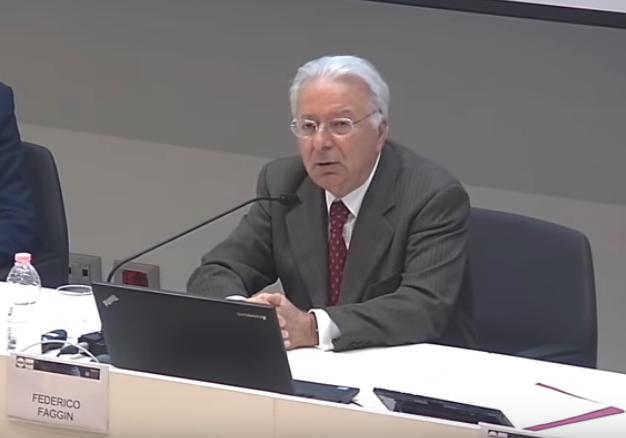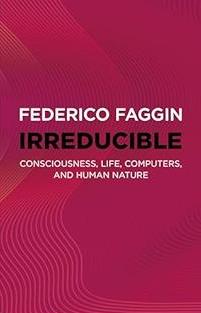|
Word Gems
self-knowledge, authentic living, full humanity, continual awakening
Editor's Research Project, a 5-Year Study
Quantum Mechanics
|
science's greatest mystery:
its history, nature, and meaning
|
“Those who are not shocked when they first come across quantum theory cannot possibly have understood it.” Niels Bohr, Nobel laureate in physics
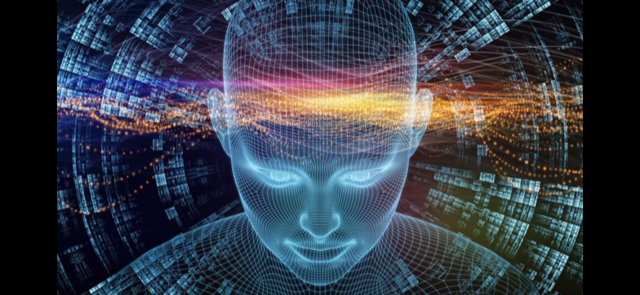
"Everything we call real is made of things that cannot be regarded as real." Niels Bohr, Nobel laureate in physics
Below you'll find 100+ articles exploring the history, nature, and meaning of quantum mechanics. These writings synthesize the work of many scientists and philosophers.
Nobel laureate Richard Feynman once said that it takes considerable time and effort just to understand the vocabulary and basic concepts of physics. To this purpose, we hope to offer a measure of clarity.
The reader is invited to also review three sister-articles, the Double-Slit Experiment, Theory of Everything, and Einstein's Relativity.
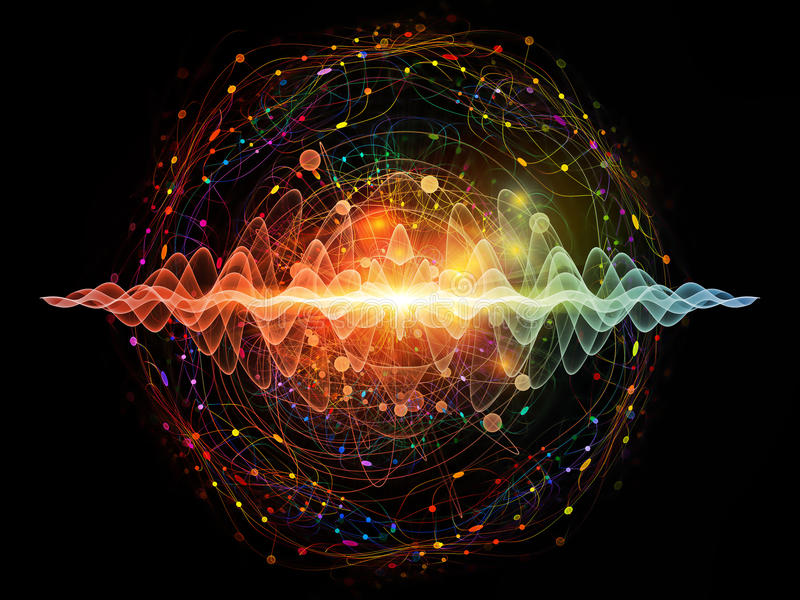
please click on each link-icon
Editor's Review, 5 years later: What I've learned from this research project.
How to study quantum mechanics
Timeline: the development of quantum mechanics
Quantum Mechanics: brief definitions
In the early 1920s the phrase “quantum mechanics” came into use for the new physics. The historical development of the term helps us to understand what was meant when it was first employed.
The Hollywood version of quantum mechanics is entertaining but not helpful to our understanding of reality.
|
'the truth is not a fragile thing and will eventually rise to the top of a heap of competing ideas'

Physicist Tom Campbell, in clear language, explains the history and significance of the quantum mechanics revolution of 100 years ago, how its implications were denied by materialists, and why, as Tom sees it, its proper explication might lead to a better world, free from the power-control-force paradigm afflicting all of us today.
READ MORE
|
Dr. Fritjof Capra: From Thales to Descartes: How a Cosmos of Interconnected Energies was misinterpreted as Universe-as-Machine, a Dualism of Mind-Matter, a Fragmentation of Body-Soul

The pre-socratics, Democritus and Leucippus, 2450 years ago, taught that the world is made of “atoms” and “the void".
Werner Heisenberg, Physics And Philosophy: The ancient Greeks and the origins of atomic science and quantum theory.
Isaac Newton’s clockwork universe: "Nature's laws lay hid in night: God said, Let Newton be! and all was light."
Gary Zukav: the Newtonian view deals with specific events, precisely determined and governed, but the Quantum world speaks of statistical averages and probabilities
Quantum theory signaled the end of an era that began with Galileo and Newton. By the middle 1800s, Newtonian mechanics was at its zenith; all phenomena of nature, it seemed, could now be explained in terms of mechanical models. Even as the celebratory hubris climbed, however, its demise was already fomenting.
|
the end of determinism
|
“For centuries, scientists believed that Nature was predictable. If only we knew enough about how the world worked, we could say exactly what would happen in the future.

"It seemed obvious that Nature was deterministic: one thing determines another. But quantum mechanics shattered that certainty.”
|
from the BBC documentary “The Search For Reality”
|
Huygens vs Newton: origin of the "wave-particle" debate.
Thomas Young conducts the first double-slit experiment which convincingly demonstrates that light is a wave.
John Dalton's "solid sphere" atomic model and "law of multiple proportions" refashion chemistry, providing the first scientific evidence that matter is made of tiny atoms.
|
does the moon pop out of existence when we turn our heads
|
“We often discussed his notions on objective reality. During one walk...
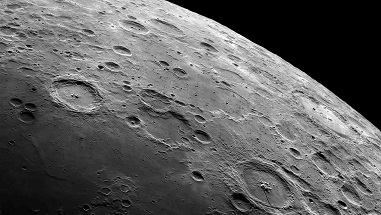
"Einstein suddenly stopped, turned to me and asked whether I really believed that the moon exists only when I look at it.”
Abraham Pais, fellow physicist with Einstein at Princeton
|
Editor’s note: While “matter has no stand-alone reality” and is a “function of how we are put together to observe the world” (see Kastrup below), it is also true that matter, having entered the realm of shared observation, becomes part of the “rule set,” accessible and manifesting with a degree of uniformity to “all players of the game.” See Tom Campbell’s lectures below.
|
Michael Faraday and the concept of "fields," regions of activity which organize energy, the basis of light as electromagnetic field.
James Clerk Maxwell's famous four equations offer mathematical support for Faraday’s view that light is an electromagnetic wave.
J.J. Thompson discovers the electron. The atom has component parts after all and is not a "solid sphere" as Dalton theorized.
Max Planck sets off the quantum reformation. He's called "the father of modern physics"; a reluctant paternity. He could not accept his own findings that a light wave might also be a particle.
|
| “If a person, such as a mouse, looks at the state of the universe, does that change the state of the universe?” |

Albert Einstein, in a lecture at Princeton. READ MORE
|
J.J. Thompson's "plum pudding" model of the atom
Einstein and the Photoelectric Effect: the "ultra-violet catastrophe" is solved with "the most revolutionary" idea of the 20th century: the light wave can be a particle.
Arthur Compton confirms the Photoelectric Effect: electromagnetic radiation is composed of particles.
Fletcher and Millikan measure the charge of an electron with the famous "oil drop" experiment
Rutherford’s atomic model speaks of a “nucleus.” Unlike the diffused “plum pudding” view, the atom’s positive charge, and almost all of its mass, is concentrated in an extremely small central region.
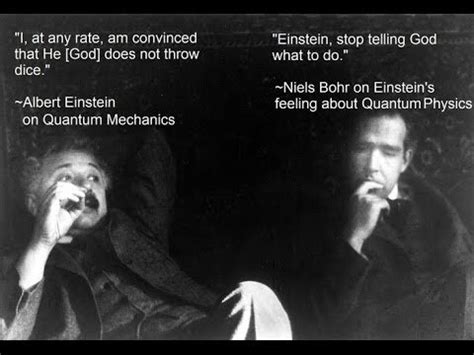
The first Solvay Conference, 1911: 18 leading scientists discuss recent massive changes in physics, Newtonianism giving way to Quantum Mechanics.
Bohr’s atomic model puts electrons in fixed orbital shells, energy levels, encircling a nucleus, like planets in a mini solar system.
Gary Zukav: according to Bohr's theory, electrons like to stay as close to the nucleus as possible; but, if energy is added, the electron will jump to one of the outer shells; when it cools off, it will return to a lower shell, but, as it does, it emits a photon as excess energy lost
The Heisenberg-Schrödinger model of the atom replaced the earlier Bohr model. In the Heisenberg-Schrödinger model, electrons obey a "wave function" and occupy "orbitals" rather than orbits.
The 1922 Stern-Gerlach experiment offered the first hint that quantum particles had an unrecognized property of magnetism, which came to be known as “spin,” though the concept has nothing to do with rotation.
The French physicist DeBroglie said, “We learned from Einstein that a wave can be a particle – but what if the reverse is true? What if an electron particle, matter, might also exist as a wave?”
Wolfgang Pauli formulates his Exclusion Principle, which describes the forces preventing all electrons of an atom falling to the lowest energy level.
Max Born submits his matrix-math paper which places Heisenberg's research on a solid mathematical foundation.
|
all facts are important
J. Arthur Hill: "Facts differ in importance, but it is a fundamental article of ... science that all facts are important in some degree.
all facts are important for, as they gather, an underlying tapestry of reality is revealed
"The import of some of them may not be clear at first, but continued collection brings about the possibility of valuable inferences. An orbit cannot be computed from one or two points given; many are necessary.
all facts are important and none of it is 'minor', for all knowledge is connected, Nature is of a piece and unfurls seamlessly, but only to the mind patiently assembling the data
"Similarly a number of facts — the more the better — may be required before we see their meaning. But there is a meaning, and it is worth our while to amass details patiently. This is the modern spirit [of science] — to inquire of Nature instead of building philosophic word-structures into the blue. Observation and record are the watchwords.”
|
Bell Labs scientists, Davisson and Germer, accidentally confirm DeBroglie’s hypothesis: the electron particle, matter, is also a wave.
The fifth Solvay Conference, 1927: 29 leading scientists discuss "electrons and photons." Debates ensue concerning the meaning and nature of the newly-constructed quantum theory. Albert Einstein and Niels Bohr hold center stage.
Redefining nothingness: Paul Dirac formulates his equation describing behavior of electrons and quarks and predicting the existence of anti-matter as positron
Dr. Fritjof Capra: Before Dirac, matter had been viewed as elementary units, indestructible and unchangeable, or as composite objects to be broken up into constituent parts; again and again, until finally arriving at some smallest indivisible units. But, after Dirac’s discovery, it was learned that, when two particles collide, they break into pieces, but these are not smaller than the original particles. The new particles are of the same kind. We can divide matter again and again, but we never obtain smaller pieces. The subatomic particles are thus destructible and indestructible at the same time.
An overview of the Bohr-Einstein debates: 1927 to 1935
|
in the 1920s, Alfred North Whitehead was among the first to grasp the underlying significance of quantum mechanics
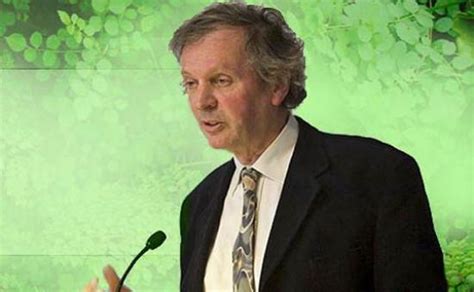
The following is a paraphrase of a portion of Dr. Rupert Sheldrake’s lecture which can be accessed on youtube beginning at 15:45.
In the 1920s, when quantum physics was just getting started, Alfred North Whitehead was one of the first to understand it. Other philosophers didn’t have the math background, but Whitehead was also a mathematician and so he grasped the significance immediately.
Because light and matter are wavelike, and because waves spread out, both in time and area, Whitehead realized that you couldn’t have a wave at an instant; you can’t have a small slice or particle of a wave and say here it is, because it’s spread out. A wave takes both time and space to move about. And so you can’t define it in a particular time or place, and this is the subsuming reason for Heisenberg’s Uncertainty Principle because fundamental particles are wavelike.
'matter is a process', not made of hard little bee-bees
And so, what Whitehead showed was that matter is not “stuff,” as the nineteenth century Newtonian physicists had insisted. Matter wasn’t like little billiard balls, hard, impenetrable stuff that persisted. Whitehead said that, instead, matter is a process, because it’s like a wave, and if it’s a wave, and if it’s a process, then it takes place in time, and if it takes place in time, then it has a polarity of time, a past and future ‘pole.’ And this completely transforms our view of matter...
READ MORE on the "consciousness" page
|
Bohr's complementarity principle: Different factual aspects of truth are not contradictory but complementary, as we need all views to form a complete picture of reality.
The meaning of "superposition"
What did Einstein mean, "God doesn't play dice" with the universe?
Bohr's view of QM echoing Kant's "the thing in itself"
The sixth Solvay Conference, 1930: Einstein presents Bohr with the photon-box thought-experiment.
Bohr-Einstein debate: EPR Paradox: an overview of the famous paper published in 1935
Bohr-Einstein debate: EPR Paradox: Bohr's reply to Einstein
John Wheeler summarizes Bohr's position: 'the central point and lesson of twentieth century physics'
|
a sudden inspiration - 'the most profound insight in the entire history of science'
This is the view of physics Professor Jim Al-Khalili, as offered in the documentary “Atom.” What was this shattering revelation?
In 1926 Werner Heisenberg was working as an assistant to Niels Bohr at his mentor’s institute in Copenhagen.
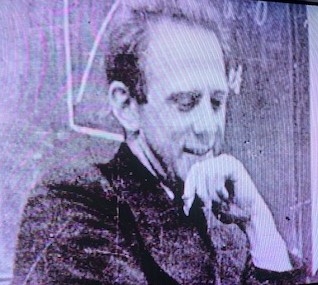
Almost every night they would enter into fierce debate concerning the nature of the quantum world. Everyone was searching for a model, a guiding matrix, an underlying pattern by which to understand the atom and the new theory.
what Heisenberg saw
Early on it was thought, “When we get better measuring devices, when our instrumentation is more precise, we’ll be able to know both position and momentum.” But Heisenberg finally realized that lack of information was not due to faulty scientific hardware, nor is this elusiveness the result of the atom being quirky or tricky.
In a burst of hot creative moment, Heisenberg understood what no human being had ever perceived. The implications were utterly radical, profoundly upsetting to traditional Newtonian physics.
there is no model: the atom, essentially, is unknowable
There is no model, no familiar picture, no visual aid for the atom. It cannot be tethered and corralled, in terms of arriving at final understanding. The atom, in its core essence, essentially, is unknowable. Reality – at its deepest level – is fundamentally built upon principles of chance and probability and cannot be strictly defined or determined.
READ MORE on the "theory of everything" page
|
Bohr-Einstein debate: EPR Paradox: why is it called a paradox?
Bohr-Einstein debate: EPR Paradox: what is "spooky action at a distance"?
Bohr-Einstein debate: EPR Paradox: what is local realism?
Bohr-Einstein debate: EPR Paradox: what is non-locality?
Bohr-Einstein debate: EPR Paradox: what is quantum entanglement?
Erwin Schrödinger coins the term "entanglement"
Bohr-Einstein debate: EPR Paradox: what is particle spin?
Bohr-Einstein debate: EPR Paradox: what are "hidden variables"?
|
Bohr versus Einstein
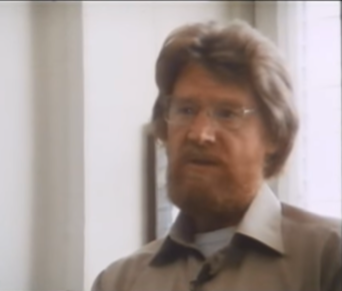
|
Dr. John Bell: “Bohr was inconsistent, unclear, willfully obscure, and right. Einstein was consistent, clear, down-to-earth, and wrong.”
|
|
What is measurement?
What is the Copenhagen Interpretation of quantum mechanics?
What is a wave function?
Is the 'wave function' something actual, imaginary, or maybe an invisible wave? Some scientists today argue for its reality.
What is Heisenberg's Uncertainty Principle?
Heisenberg's Uncertainty Principle is based upon the feature that electrons in the wave state are spread out and cannot be pinpointed as a particle.
What is the Schrodinger Equation?
What is "Schrodinger's Cat"? Part I
The Heisenberg-Schrödinger model of the atom replaced the earlier Bohr model, but Schrödinger saw electrons as smudged waves that extended all throughout space and time, while Heisenberg saw the electron as a particle.
Werner Heisenberg, Physics And Philosophy: Heisenberg comments on how Schrodinger's theory differs from that of Copenhagen.
Dr. John Wheeler recalls Einstein's "mouse looks at the universe" comment.
What did physicist David Mermin mean by "shut up and calculate"?
|
'the central point and lesson of twentieth century physics'
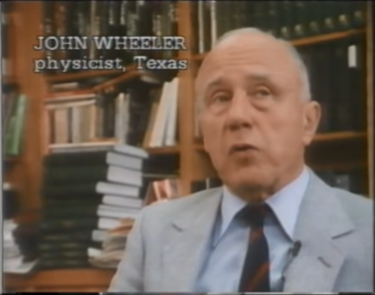
|
Dr. John Wheeler: “It’s the strangest thing in this strange world, this elementary quantum phenomenon of Niels Bohr, and yet of all the things we’ve learned it is the central point and lesson of twentieth century physics… [It] does not become a definite phenomenon until the end ... by our choice of observing device..."
|
READ MORE
|
Closing the Einstein-Bohr EPR debate: Northern Ireland physicist John Bell in 1964 proposes a mathematical test for the existence of “hidden variables” via his now-famous inequality theorem
Closing the Einstein-Bohr EPR debate: a 1972 experiment by Clauser and Freedman tests Bell's inequality, dealing a blow to EPR's "hidden variables": physical systems obey quantum mechanics
Closing the Einstein-Bohr EPR debate: French physicist Alain Aspect, and colleagues, in 1982 performs the first quantum mechanics experiment demonstrating a violation of Bell's theorem, an undermining of EPR's "locality"
The psychology behind the use of the word "weird" in describing quantum mechanics.
Kairissi and Elenchus: Summary Statement, Part I
|
'matter is completely mutable, can be created from energy and vanish into energy'
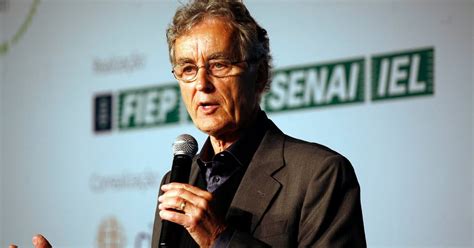
| Dr. Fritjof Capra: “We can divide matter again and again, but we never obtain smaller pieces… The high-energy [particle] experiments of the past decades have shown us the dynamic and ever-changing nature of [reality]... Matter has appeared in these experiments as completely mutable. All particles can be transmuted into other particles; they can be created from energy and can vanish into energy… classical concepts like ‘elementary particle’, ‘material substance’ or ‘isolated object’, have lost their meaning; the whole universe appears as a dynamic web of inseparable energy patterns...” |
READ MORE
|
There are 20+ interpretations of quantum mechanics. Why are there so many?
Scientific American says there is one basic difference between Copenhagen and the other competing QM interpretations
Science News posits an expansion of common definition of "what is". “Real” should not be restricted to “actual” objects in spacetime but include elements of potential reality. When we do, the apparent mysteries of QM melt away. Heisenberg suggested that Nature itself considers these “realities in potentia” as bona fide elements of existence.
The “Many Worlds” theory, which is an interpretation of QM, centers upon the nature of the probability wave-function. What happens to the infinite number of quantum possibilities?
Dr. Stephen Meyer: “Many worlds” and “parallel universes” is a fabricated, ad hoc concept, unsupported by scientific evidence, existing to serve one purpose: that of circumventing the argument of Intelligent Design: “Stanford physicist Leonard Susskind explains the attraction of the Multiverse: ‘Without any [other] explanation of nature’s fine-tunings we will be hard pressed to answer the ID [intelligent design] critics.’ Indeed, the Multiverse is now the go-to atheistic explanation for the design of the universe.”
Werner Heisenberg, Physics And Philosophy: Critics of the Copenhagen interpretation fall "into three different groups." However, all dissenters "agree on one point" - a desire to return to Newtonianism.
|
the night sky, the vastness of outer space, not a vacuum of emptiness but a plenum of infinite possibility

Dr. David Bohm was walking with one of his grad students, the future Dr. David Schrum, who recounts:
“It was night and we were walking under the stars, a black sky. David looked up at the stars and said: ‘Ordinarily, when we look to the sky and we look at the stars, we think of the stars as objects far out and that they have space in between them. But there is another way we can look at it. We can look at the vacuum, the emptiness, as a plenum, as infinitely full rather than infinitely empty, and that the objects are like little bubbles – little vacancies – in that vast sea.’ So he had me look at the night sky in a different way – as one living organism.”
READ MORE
|
Einstein and Bohm: revisiting the implications of EPR; as Wolfgang Pauli noted, "What Einstein just said isn't so stupid"
Dr. David Bohm: an overview of his life and work
Dr. David Bohm: "heir to Einstein"
Dr. David Bohm: "Both quantum mechanics and relativity suggest that the world is not made of broken parts [particles] but is an unbroken whole and flowing movement."
|
the Bohr-Einstein argument offered competing views of reality
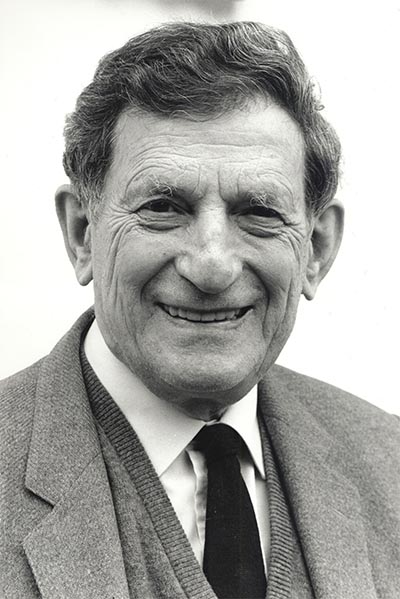
Dr. David Bohm comments:
“I think our recent past, the last few hundred years, has been such to condition us heavily to the notion of unambiguous reality. And I think this was Bohr’s basic point that Einstein never appreciated. The disagreement between Bohr and Einstein was that Bohr talked of ambiguity and Einstein talked of a signal which means unambiguity. And that was what they were fighting about.”
see the interview
|
Paul Howard, film maker: Infinite Potential: The Life & Ideas of David Bohm
Dr. David Bohm: 1990 interview: wholeness, timelessness, and unfolding meaning
Dr. David Bohm: he explains his 'implicate order' with his famous analogy of the cylinders, glycerin, and ink.
Dr. David Bohm: he recalls an analogy from Bohr comparing thought to QM
|
Big Religion became the most powerful institution in the Western world by manipulating the fear of death, thereby controlling whole continents and civilizations
Dr. Bernardo Kastrup, PhD philosophy, PhD computer science, interviewed by Beshara Magazine:
“[Scientific] materialism didn’t become mainstream without reason. One of its biggest advantages is that in one fell swoop it eliminated the biggest fear humanity has had throughout its history, which is: what are we going to experience after we die? In Christian terms, are we going to go to hell? This fear has dominated human life to the point that the Church could control whole continents and civilizations and became the most powerful institution in the Western world. It is this fear that makes us feel guilty, which imbues us with anxiety and a sense of responsibility for what we do. But if we don’t believe in anything beyond material existence, we don’t need to worry.”
READ MORE
|
Dr. David Bohm: long-time colleague at University of London, Dr. Basil Hiley, speaks of Bohm's contributions to quantum theory, the 'quantum potential'.
Dr. David Bohm: fellow physicist, Dr. David Peat, recalls Bohm's thoughts on a number of issues, including the 'inexhaustible universe' with no limit to depth of meaning and wonder.
Dr. David Bohm: Bohr argued that Heisenberg was totally wrong to begin his ‘uncertainty principle' with a well-defined path. When Bohm read Bohr’s comments, he suggested that Heisenberg’s uncertainty principle would be far better called the ‘ambiguity principle’
|
passionate search into the nature of things
“Unlike other professors [at Princeton], Bohm was noncompetitive in his approach. Once, after Bohm had spent time developing an aspect of his plasma theory, [Eugene] Gross came across a paper on the same topic by the great Russian physicist Lev Landau [publication delayed in the aftermath of war]. Bohm was not at all perturbed … rather, he admired the elegance and incisiveness of Landau’s approach. In Gross’s opinion, ‘Dave’s essential being was then, and still is, totally engaged in the calm but passionate search into the nature of things. He can only be characterized as a secular saint. He is totally free from guile and competitiveness, and it would be easy to take advantage of him. His students and friends, mostly younger... felt a powerful urge to protect such a precocious being.”
Infinite Potential: The Life and Times of David Bohm, Dr. David Peat
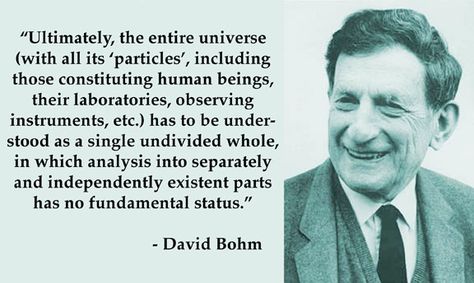
|
Dr. David Bohm: he explains the differences between relativity and quantum mechanics and also an area of common ground.
Dr. David Bohm: he answers the question, what is the nature of reality?
|
Sheldrake and Bohm
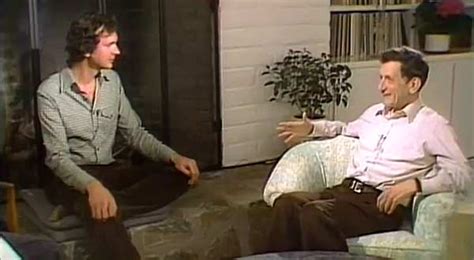
Dr. Rupert Sheldrake and Dr. David Bohm discuss morphic fields and the implicate order.
READ MORE
|
Dr. David Bohm: he answers the question, how can we know if a theory is correct? 'You have to be constantly sensitive to incoherence.'
Dr. David Bohm: a brief Introduction to Krishnamurti's teachings on dualism and oneness
|
an atom can oscillate between two states, wave-form and actuality
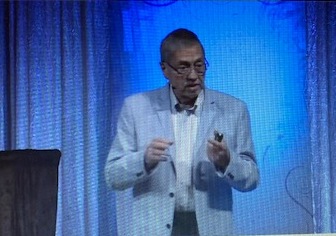
Dr. Lothar Shafer: An electron or atom, in a vacuum, goes back to a state of wave-form, loses all mass, has no specific position in space, becomes mere invisible potentiality. But, when interacted with, enters a new state of visible actuality.
- QM reveals a part of the world we can’t see
- it doesn’t consist of things but of forms
- the forms are mind-like, thought-like, patterns of information
- they display a character of wholeness
- this could indicate the existence of a cosmic mind
- which is connected to our minds
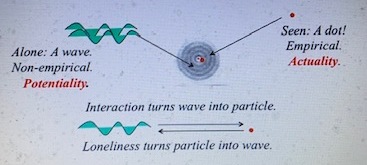
see the lecture
|
Bohr advocated a consideration of Eastern philosophy for a better understanding of quantum mechanics.
Alain Aspect: The common world that we know cannot provide a model for the quantum atomic world.
|
'a continual popping into existence from the void'
Dr. Jim Al-Khalili: English physicist Paul Dirac in 1928 predicted the existence of the positron and anti-matter. His famous “Dirac Equation” is sometimes called “the most beautiful equation in the world.”

Dirac’s mathematics predicted a continual virtual popping into existence, from the seeming void, matter and anti-matter particles, most of which would almost instantly annihilate each other. However, one in a billion of these particles would not be destroyed but remain. These survivors become the matter of the universe, the material stuff of which all things consist.
.jpg)
READ MORE
|
Dr. Fritjof Capra: The mind is capable of two kinds of knowledge, two modes of consciousness, often termed the rational and the intuitive; both are represented in modern physics and Eastern mysticism; each has its own emphasis on observation and experience, the basis of the scientific method.
Dr. Fritjof Capra: a unity of opposites
Dr. Fritjof Capra: Nature reflects an internal regulating self-consistency, which, in itself, a "bootstrap" principle, leads forward cosmic evolutionary development.
|
the universe as mechanical clockwork precision
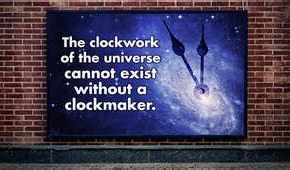
|
Editor’s note: In my youth, diligently studying the Bible in hopes of discovering ultimate “truth”, I attended a church which preached “the clockwork of the universe requires a clockmaker.” For a long time, I found this a reasonable proposition. However, I would learn that the universe is not a Great Machine. There is no Cosmic Clockwork. Matter does not constitute the underlying ground of what is. Newtonianism has been superseded by quantum mechanics as fundamental theory of reality. And in that ultra-small world of elemental essence, there is no strict cause-and-effect. Materialistic college history professors, smugly insisting “there is no free will”, and fundamentalist churches, gathering support for their “infallible” doctrines, will be among the last to acknowledge that classical physics became passé over 100 years ago.
|

READ MORE
|
Dr. Fritjof Capra interview: The Cartesian dualism of mind and body, of unwarrantedly breaking the universe into competing elements, has been incorporated into the policies of the institutions of our world - a crisis-of-perception, on many levels of society, caused by a fragmented, mechanistic, reductionistic metaparadigm.
Dozens of quotations from the “quantum fathers” asserting that consciousness, not matter, is the fundamental reality of the universe; consciousness, not matter, is the essence from which all material substance derives.
Werner Heisenberg, Physics And Philosophy: Heisenberg discusses how Bohm's theory differs from Copenhagen, though the two are in substantial agreement.
|
'the substratum of everything is of mental character'
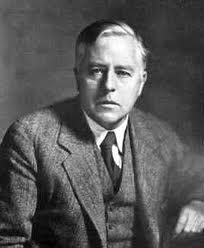
Sir James Jeans (1877-1946)
Cambridge professor of mathematics and physics
|
"The stream of knowledge is heading toward a non-mechanical reality; the universe begins to look more like a great thought than like a great machine… If the universe is a universe of thought, then its creation must have been an act of thought.”
|
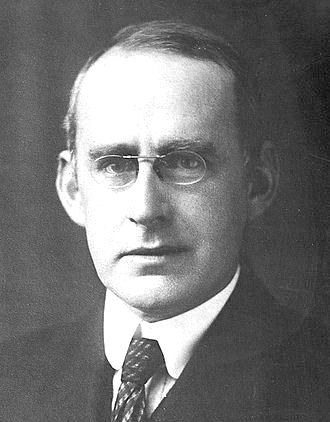
|
Sir Arthur Eddington (1882-1944), FRS
Cambridge astronomer, physicist, and mathematician
He popularized relativity theory, with Einstein
suggesting his discourses to be "the finest
presentation of the subject in any language."
|
|
"Physics is the study of the structure of consciousness. The 'stuff' of the world is mindstuff."
“The universe is of the nature of a thought or sensation in a universal Mind… It is difficult for the matter-of-fact physicist to accept the view that the substratum of everything is of mental character.”
|
READ MORE
|
Freeman Dyson: suggests that relativity and quantum theories should not be unified, that they're meant to be separate
Gary Zukav: can we see atoms and subatomic particles with a microscope?
Gary Zukav: Is quantum physics the study of consciousness?
Gary Zukav: Newtonianism asserted that, with enough information, we could predict the movement and fate of any object in the universe. QM says, no, this is not possible, not because measuring devices might be insufficient, but that determinism, at the core of reality, does not exist.
Redefining "truth": traditionally, "truth" has been viewed as a "one to one correspondence" of things in the world with our thoughts about them. But QM changes this.
|
Direct-Voice medium Emily French, with Edward Randall, brings through a scientist from the other side who offers the basic concepts of quantum mechanics. This testimony was given before Heisenberg, Bohr, Dirac, and Schrodinger made their discoveries.

We met Randall and French in item #5 of the afterlife evidence, “direct-voice mediums.” They worked together for about 20 years in the early 1900s. While they brought through hundreds or thousands of voices from the other side, one in particular offers most astonishing scientific information – before it was discovered by the fathers of quantum mechanics.
READ MORE
|
Dr. Dean Radin: Can one's intentions affect the quantum world and create reality?
Dr. Nick Lucid: What is energy? Textbooks speak of many different kinds of energy but they all reduce to only two: potential energy, of position, and kinetic energy, of motion.
Dr. Nick Lucid: What is mass? The classic definition says its the amount of stuff inside something. But when we go looking for the "stuff" there's nothing there but energy.
Dr. Matt O'Dowd: What is mass? "Mass is an emergent property of the interaction of particles."
|
Schrodinger's Moon
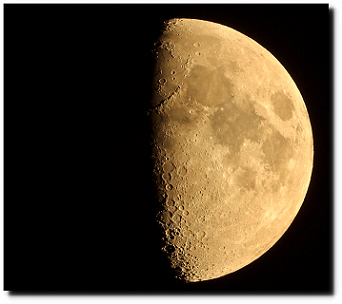
|
In this thought-experiment, instead of a cat we have the Moon as subject. Instead of a hidden cat in a box, we can avert our eyes from the Moon so as to not see it. Instead of a possible release of poison gas for the cat, we postulate a cache of nuclear explosives on the Moon, large enough to shatter it. Now, like the glass vial of poison, the nuclear explosives are also potentially activated by the half-life of atoms.
So, what do we have? If we turn our backs to the Moon, we can no longer see it; the cat is now placed in the box, and we no longer see it. In one hour, the potentially decaying atoms will have activated a destructive device; which is to say, in one hour, the fate of both the cat and the Moon will be decided.
Decided by what?
|
READ MORE
|
Dr. Rupert Sheldrake: Consciousness is a quantum field containing all manner of possibility
Werner Heisenberg, Physics And Philosophy: Offering a brief history of the development of QM, he then summarizes: “We have to remember that what we observe is not nature in itself but nature exposed to our method of questioning; as Bohr put it, when searching for harmony in life one must never forget that in the drama of existence we are ourselves both players and spectators.”
Werner Heisenberg, Physics And Philosophy: He draws distinction between the 'physical' and 'psychical' act of observation concerning the question 'What happens really in an atomic event?'
What is a quantum field?
What is a quantum state?
What is a qubit (quantum bit)?
What is Hilbert Space?
|
‘matter is how the world appears when we measure it… if we abandon the intuition that matter has a stand-alone existence, then the paradoxes resolve; there is no great mystery here [only] our stubbornness in trying to hold on to a failed intuition’
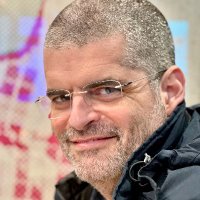
Dr. Bernardo Kastrup, PhD philosophy, PhD computer science, for many years worked at CERN, the large hadron collider in Geneva.
Interviewer: "[Concerning Kant’s insight that space and time are not objective scaffolding of the world but cognitive categories] How do you relate this to what we know about quantum mechanics, which seems to be a different layer from our ordinary physical reality?"
Kastrup: "The key difference is between the thing in itself – the world as it is in itself – and the world as it presents itself to our observation. The world as it is in itself is pure: it’s a function of itself. But the world as it presents itself to our observation is not only a function of the world as it is in itself; it’s also a function of us and how we are put together to observe the world.
"In quantum mechanics we have the idea of the wave function – Schrödinger’s equation – which is an expression of all the states that are possible, and when we take a measurement, we say that it collapses… But a measurement is already a representation – an appearance. It is what happens when the world as it is interacts with us. What we can measure is never going to be the world as it is in itself.
"So what quantum physics is telling us is that matter has no stand-alone reality. Matter is how the world appears to us when we measure it, when we interact with it, when we observe it … As to what is behind that appearance, we cannot visualize it as anything material or physical because all the parameters used to exhaustively describe what we call material things are observables. The best we can know about the world as it is, is the quantum wave function, which is a statistical thing – a wave of possibilities.
"This is what we have to get through our heads. Quantum mechanics has been around since the early 20th century, but we have been stubbornly refusing to accept what it is showing us. If we abandon the need to preserve the intuition that matter has a stand-alone existence, then everything that we consider a great puzzle in quantum mechanics – the great paradoxes of non-locality and indeterminacy, etc. – immediately resolve. There is no great mystery here. The mystery is our stubbornness in trying to hold on to a failed intuition."
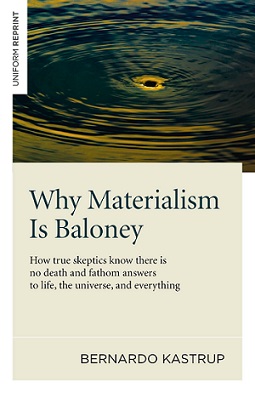
READ MORE
|
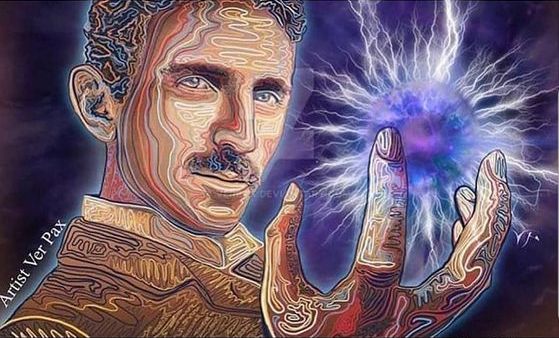 |
|
|
“The day science begins to study non-physical phenomena [the primacy of consciousness], it will make more progress in one decade than in all the previous centuries.”
"Physics extends beyond what is scientifically known today. The future will show that what we now call 'occult' or 'the supernatural' is based on a science not yet developed, but whose first infant steps are being taken as we speak."
“If you want to understand the Universe, think of energy, frequency, and vibration.”
“My brain is only a receiver, [and] in the Universe there is a core [of] knowledge, strength, and inspiration. I have not penetrated the secrets of this core, but I know it exists.”
Nikola Tesla
|
|
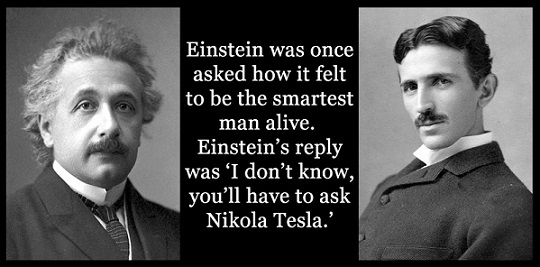 |
What does quantum “indeterminacy” mean? – as Dr. Kastrup uses the term.
Does quantum mechanics, in effect, devolve to a study of consciousness?
The view of consciousness, not matter, as primary element of the universe is gaining traction, with some deference now by materialistic science. However, beware the half-hearted repentance. They acknowledge only to marginalize, and then to dismiss.
Werner Heisenberg, Physics And Philosophy: Heisenberg offers his views on the need for objectivity, "intellectual honesty," by those who call themselves scientists.
Peter Russell: Planck's Constant and the Quantum Of Action: these are not quantities of energy per se, but a rate or process of a manifestation of energy. What does this mean?
What is "Schrodinger's Cat"? Part II
Roger Penrose: people misinterpret what Dirac said about the "cat both dead and alive"
Roger Penrose: agrees with 'three greatest physicists' that Q.M. needs to be modified

Elon Musk, along with Tom Campbell and others, suggests that we are living in a virtual reality: He says there’s a ‘one in billions’ chance reality is not a simulation.
Physicist Tom Campbell: “The next big cultural and scientific paradigm shift is virtual reality.”
Tom Campbell: attributes of virtual reality
The Double Slit Experiment: "interference" versus "clumping" pattern is affected by knowledge of the “which way” data of the particles.
Tom Campbell's short videos explaining the Double Slit Experiment
John Wheeler invented the terms and phrases "black hole", "wormhole", "there is no out there out there", but also "it from bit"; that is, the universe ("it") derives from an underlying computer-like information source ("bit").
John Wheeler quotations
A discussion concerning the resemblance between physical reality and a computer simulation.
|
Dr. Frederico Faggin, inventor of the silicon chip in 1971, is today advocating a new revolution in science: the primacy of consciousness over matter
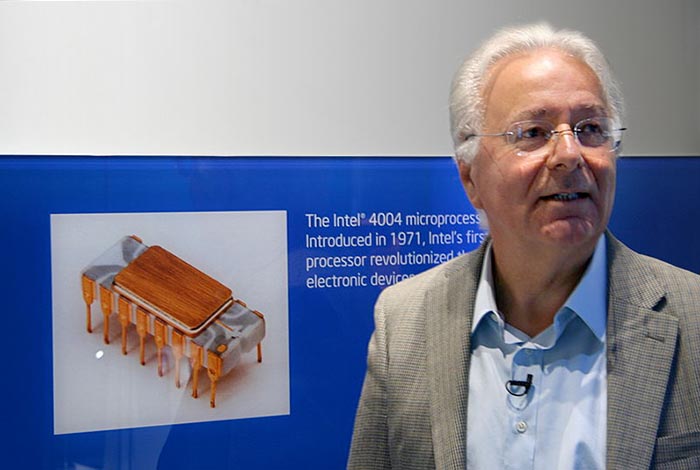
|
"The structure of matter is isomorphic to the cognitive structure of consciousness, which can reflect itself [in matter]"; our "bodies reflect the accumulated learning of consciousness; matter is the ink with which consciousness writes its own self-knowing."
|
READ MORE
|
Kairissi and Elenchus: Summary Statement, Part II
What is the central mystery of QM?
Virtual Reality: ‘collapse of the wave function’ - consciousness as mediator, as though the universe were a display-screen to the user
Virtual Reality: uncertainty and complementary properties - as though variables were being redefined and results calculated and recalculated according to an underlying formula
Virtual Reality: the identical, interchangeable nature of "particles" and measured properties; as though the "particles" were merely pictures of particles, like computer icons.
Virtual Reality: continuity and discontinuity in observed behaviors
Virtual Reality: non-locality: as though all calculations were in the CPU, regardless of the location of the pixels on the screen
|
Consciousness, not matter, discovered to be elemental by the Kogi people of South America
In the “creativity” article, we spoke of the famous painting wherein Isaiah is listening.
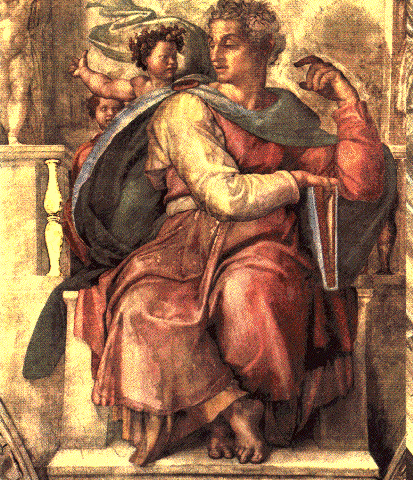
Isaiah listening versus Isaiah questioning
We in the West are proud of the scientific method; and, rightly so, as it’s produced an awesome array of technological advancement.
However, there’s another, entirely different, but absolutely valid, approach to knowledge production of which we tend to be oblivious. It is the realm of intuition, of creativity’s “discontinuous” leaps forward, the quantum realm of the mind’s infinite possibilities, the child of Universal Consciousness.
In this latter world, Isaiah does best just to listen and will refrain from asking questions. Why this diminishment of questioning? Questioning does fine when allied with the scientific method but gets in the way when we enter the intuitive realm. The problem with questioning is that it presumes an intellectual framework into which we desire new information to fit. In a sense, we've already decided what the answer ought to be. But what if the answer is far above our present paradigms of knowledge with no correspondence to present understanding; in such case, it would be best to maintain silence and simply listen, as “The Wedding Song” uses the phrase, to “something never seen before.”
What I’m about to introduce must be presented in severe elliptical fashion. Brevity must rule as the subject is too large, but worthy of extensive study and consideration. I hope that you will learn more by searching the linked references.
the Kogi people have learned to listen

For some decades British journalist-anthropologist Alan Ereira has investigated the high-mountain tribal Kogi people who live in the Sierra Nevada de Santa Marta in the north of Colombia.
The Kogi have learned to listen to the whispering messages of Universal Consciousness, as expressed in Nature, to a degree that might be unrivaled in the world, save for the best medicine men of North American indigenous peoples.
We have discussed this form of "listening", this "going within" to access Universal Intelligence, on the "true self" page. But the Kogi are masters, far ahead in this, and take it to high art-form.
How can we confirm their expertise? The Kogi know things, and are able to do things, for example, in terms of environmental cleansing, reforesting, of healing the land, that we in the West are not able to do.
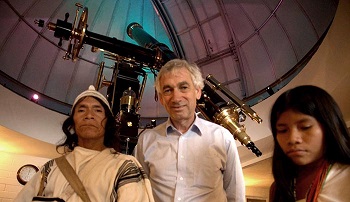
immediately picks out the one star in a blizzard of galaxies
During a trip to London, this Kogi master met with a leading astronomer. A photograph was brought out of the Hubbell “deep field,” a tiniest postage-stamp, and apparently empty, section of the inky blackness which, under intense magnification, revealed some few thousand galaxies. As confirmed by the astronomer in the video, the Kogi immediately pointed to the single star – not a galaxy – amidst the blizzard array and, in Kogi language, referred to it by name; as if it were a close friend! All this is sensational enough, but, let's keep in mind, this star resided in a section of the heavens totally hidden and unknown, totally inaccessible to human eyes, until just a few years ago.
Much of the Kogi wisdom remains cloaked to us. They refer to us in the West as their “younger brothers.” Prodigal brothers, we take it. They don’t fully trust us to do the right thing, as the memories still linger of the RCC-Conquistador brutalities and genocide.
But the Kogi understanding of Universal Consciousness (UC) is right in line with what physicists such as Prof. Amit Goswami tell us about the quantum realm: UC represents infinite possibility but has pared down the choices so as to direct reality toward prescribed goals and destinies. In this vein, Alan Ereira reports that Kogis have a view of “Mother [Consciousness] as memory and possibility.” This is Dr. Rupert Sheldrake’s “the mind is a quantum field of possibility.”
Out of this primordial essence of Mother Consciousness -- which is the ground of reality, not matter -- all things were created. However, before she created, she “explored, almost infinitely” the various possibilities to arrive at just the right mix for those of us who would inhabit Earth. This is the answer to Leibniz’s question of the “best of all possible worlds.”
See Beshara Magazine's article on the Kogi.
See Alan Ereira's report.
View Alan Ereira's video.
|
Virtual Reality: the relationship of observed phenomena to the mathematical formalism: as though physical manifestations themselves were being produced by a mathematical formula.
Virtual Reality: What if all of physical reality, including space and time, not just energy and matter, is quantized?
Virtual Reality: Edward Fredkin, physicist/computer scientist, was the first to put forward the idea that reality is a computer simulation.
Is there such a thing as retro-causality or precognition for particles? Can a particle go back in time, or know beforehand, concerning its ‘which way’ path?
What happens to photons when absorbed? Can they ever come to rest and inactivity?
Paul Dirac perceived a link between two seemingly disparate theories, special relativity and quantum mechanics.
Kairissi and Elenchus: Summary Statement, Part III
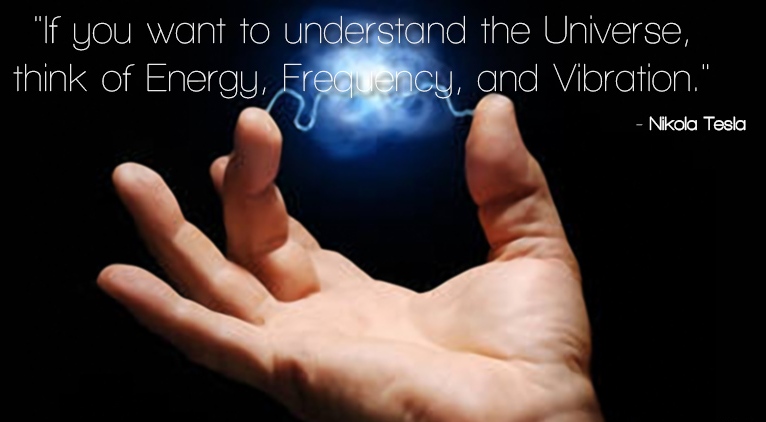
|
Newtonianism sees the world, including human beings, as deterministic, predictable, mechanical; but quantum uncertainty allows for creative impulse, change, evolving sentience
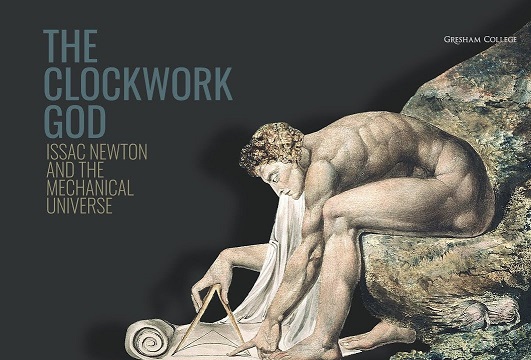
God as geometer
The ancient Greeks taught that geometry not merely describes but is built into the very structure of nature. An inscription at the entrance of Plato’s Academy declared, ‘You are not allowed to enter here unless you know geometry’, denoting that geometry represents eternal precept. This is why Plato posited, ‘God is a geometer’, that mathematics constitutes divine revelation. Euclid’s Elements devolved to more than math textbook but veritable religious treatise. This spirit of unyielding exactitude heavily influenced Western thought, producing the "laws" of the great Newton, deemed to echo God's own voice. It would take an iconoclast Einstein, with his relativity and quantum theories, to liberate the world from rigid concepts of a quasi-religious geometry. There is no inherent geometrical structure, no commanding certainty, no immovable precision, embedded within nature, rather, such view is imposed upon reality by the errant mind.
Interviewer: “What’s wrong with the old worldview?”
Dr. Amit Goswami: “The old worldview was Newtonian. In that worldview, everything is deterministic, we are machines, and cannot change.”
|
|
Victor Zammit reports on the Open Sciences organization:
530+ SCIENTISTS, PROFESSORS, MDs, AND THOUGHT LEADERS HAVE SIGNED THE MANIFESTO FOR A POST-MATERIAL SCIENCE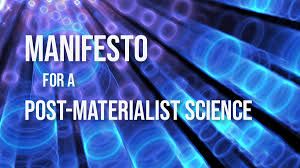
"We believe that the sciences are being constricted by dogmatism, and in particular by a subservience to the philosophy of materialism, the doctrine that matter is the only reality and that the mind is nothing but the physical activity of the brain. We believe that the sciences would be more scientific if they were free to investigate the natural world in a truly open way – without the constraints of materialism and the prejudice of dogma – while adhering to the scientific methods of data collecting, hypothesis testing, and critical discussion."
READ MORE
|
|
Dr. Rupert Sheldrake discusses the present crisis of fraud and deception afflicting peer-reviewed scientific journals:
'The peer-review system is falling into disrepute... [that] so many unreliable papers are [now] published shows that the system is not working... [an] investigation by the American journal Science revealed ... shocking results... a spoof paper, riddled with scientific and statistical errors, [with] 304 versions [sent to] peer-reviewed journals [and were] accepted for publication by more than half of them.'
READ MORE
|
THIS PAGE IS UNDER CONSTRUCTION
a project in process during 2021 - 2026

|

















.jpg)












